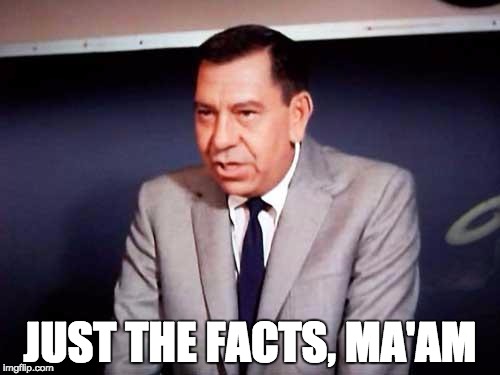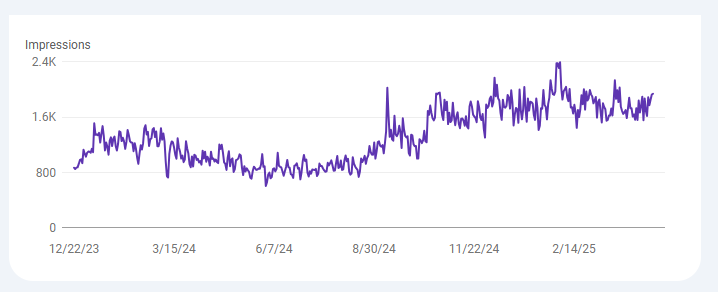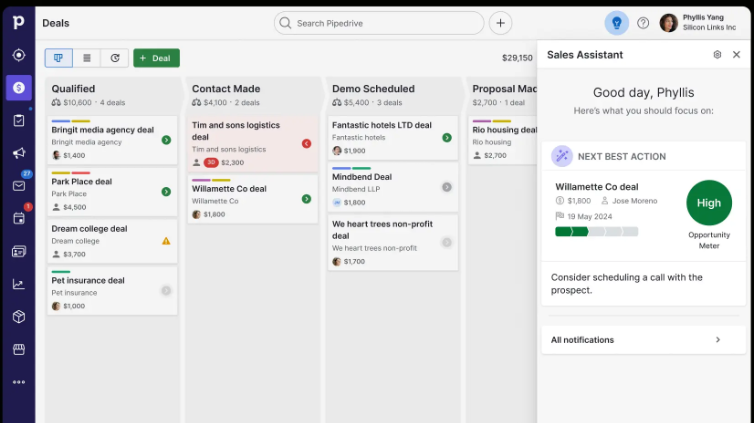When it comes to writing copy to support your sales & marketing efforts, there’s a lot of ground to cover – pay-per-click and social ads, nurture emails, downloadable brochures, printed materials, organic social posts, website & landing page copy and even graphics – and it’s easy to fall into the trap of trivialising the impact words can have on a sales process. Some might say AI tools provide a fast track to getting this content done – but there’s still a significant difference between done and well done when it comes to producing volumes of consistent copy for boosting online sales.
Here’s an A-Z guide to help ensure your copy is clever, compelling and contributes to consistent conversions for your sales department.
Creating the perfect web copy requires a deep understanding of your audience. This is honed over time and is informed by what you know of your typical customer profiles and by data from sources such as Google Analytics demographic reports. If the copy resonates with your target audience (or personas if you’ve developed them) that’s a very good starting point. If you are not well on the way to understanding your target audience profile, remember that your competitors probably are.
Ask yourself: “is your copy aligned to your brand?” For companies who outsource copywriting, this can be a significant point of frustration as copywriters sometimes “don’t get it” when it comes to your brand. Consider what brand values are you trying to convey to your target audience and how is that evident in your copy, style and tone of voice.

Why should your audience bother reading what you have to say? People are busy, in the era of instant gratification and (supposedly) lower attention spans, you've got to be good to retain your audience's attention. So what's compelling about what you have to say or even the way you say it?
Are you echoing what your competitors are saying or mimicking the way they say it? To stand out, your copy has to be distinct and recognisable and the differentiation your value proposition brings should be amplified in your copy.

Copywriting is often something small to medium business leaders and marketers put on the long finger or try to get done between ‘more important’ tasks – the result is often stale, regurgitated copy that has been copy & pasted so often it draws the interest of amateur archaeologists. Copy – in all its forms – performs best when it is fresh and vibrant. Copy & pasting is the artistic equivalent of asking a painter to re-paint the same picture repeatedly, eventually the artist and the art goes stale.

"Data, data, data, I can't make bricks without clay," said Sherlock Holmes in The Adventure of the Copper Beeches. Where possible, your position should be backed by cold hard facts - real world data to help convince your would-be customer to buy in to what you are saying.
That of course, is Dragnet’s Joe Friday, not to be confused with Sherlock Holmes!
Producing high quality copy that positively impacts your businesses bottom line isn’t easy. Having the perseverance to get creative and to go beyond the copy & paste routine to create fresh copy on a consistent basis is a real graft but if you’re prepared to stick at it you should see a positive impact on conversion rates along your sales funnel, compounding sales growth.

Are your headlines attention-grabbing? Do they grab attention for the right reasons? To retain an audience it's important that your headlines are an accurate reflection of your content. If they are not - e.g. if you use click bait headlines - then you might get clicks initially but over time, you will lose your audience. Good quality headlines should be act as a compelling summary of the article, advert or landing page that follows.
View time spent writing copy as an investment rather than a cost or a drain on time. Quality copy should be a revenue driver and the return on your investment should be evident. You might not have the time or skills to produce great content quickly but seeing money spent on copy as an investment rather than a cost will turn the tables in terms of expectations and return on investment.
For many industries, technical terminology or jargon is a necessity but it can pose challenges for copywriters trying to make copy sound interesting. Using the correct industry terminology can convey authority but it can be difficult to strike a balance between being compelling and authoritative. One way around this is to produce a ‘jargon buster’ series or FAQ-style post explaining what different industry terms mean. This in itself can act as an early stage audience builder as newcomers seek out knowledge on the meaning behind buzzwords and acronyms in their industry.

Organic search should account for at least 50% of your website traffic (in most cases). In order to maximise your organic traffic, you need to ensure that your content is factoring in keywords that match the search phrases used by your target audience. Google Trends and Google Search Console are important tools in determining what keywords you should target. A search position monitoring tool like SEMRush will also help you understand how different keywords hold different levels of significance in terms of the level of traffic opportunity and level of competition involved in ranking near the top of search engine results pages (SERPs).
As you prepare to publish your copy on the web, whether it’s for static website pages, landing pages or a blog you must give careful consideration to where that content links to and from. If your content is of a high enough calibre, then other websites will naturally link to it over time but you must also consider the knock-on effect of visits to your page – where would you like your reader to go next and are you signalling other relevant articles on your website (or third party site) that are likely to result in you securing a new customer either right away or at some point in the future. Links have an important role to play in terms of content visibility and need to be factored in to copywriting for web pages.

How does your copy influence conversions? Have you benchmarked your current performance for comparison? Measuring the effectiveness of copy across all channels can influence email open rates, click through rate (CTR), website conversions and sales pipeline close rates. If you can optimise your copy so that all of these key performance metrics are trending upwards, then the natural consequence of that is that your revenue will increase too.
Unless you operate in a very technical environment awash with acronyms and buzzwords, there’s no reason why your content cannot be natural, conversational language. This is becoming a more significant consideration from a SEO perspective too with voice search but from a human-to-human perspective, a natural conversational tone can help to disarm apprehensions and begin to build trust in your message.
When you spend valuable time creating quality copy you want to maximise how it is used. With the right level of creativity, a single piece of copy can have several incarnations at once but it’s important to tailor the content for different channels. As you plan your content with your copywriter, it’s important to consider the available channels between web, digital ads, social media, podcast scripts and offline media to ensure the best coverage and bang for your buck spent on creating content.

Where are your target audience on their buyer's journey? Are you trying to educate a new potential customer and earn their trust or are you looking to clinch a deal? The behaviour of your audience and their level of awareness and intent to purchase are key determinants of the type of copy you need to produce and aligning your content efforts to the sales pipeline stage of your CRM will help to improve conversion rates.
The quality of content and in particular – topical authority – is vital for digital copywriting. This includes displaying an in-depth knowledge of a topic and related sub-topics and not simply targeting specific keywords. This commitment to quality is effectively doubling down on your investment in copy as it’s likely to take more time in terms of research, planning and composing the content – but the expectation in terms of results should naturally be higher also.
Increasingly, the research effort is becoming a key determinant of the success of content. Understanding customer personas, competing value propositions and points of differentiation, domain expertise, historical and contemporary contexts, emerging trends and future predictions all take time but can be the difference between simply “doing more content” and being recognised as an industry thought leader.

We've already covered keywords, links and quality content above but search engine optimisation (SEO) as a whole is still largely an under-utilised channel for building a brand and generating leads for your business. Optimising content to capture natural language queries of voice search is becoming increasingly important so writing in a conversational tone is likely to be a signficant factor as AI becomes more prevalent.
Even in the age of spell check and automated content writing, spelling and grammar mistakes and typos are inevitabel (seriously!?). Proofreading is a skill in itself and takes time but the great thing about digital copy is that it can be remedied quickly even after it has been published and the same typically cannot be said in print.
Is what you are saying simply parroting what has already been said somewhere else or are you offering a unique perspective on a given topic. For content to resonate consistently with a target audience, it has to stand out from the crowd.
What you have to say should represent value to the reader. Are you looking for them to sign up to a newsletter or download a PDF document? If so, what’s the intent of that data capture – if they are a business lead, are you reciprocating value in the content you are providing? What is a fair value exchange for you and the reader and are you setting realistic expectations when publishing your content.
All the coffee in the world won’t fill a blank page. Even the most creative mind’s suffer from drawing a blank every now and again. The best thing to do when this happens is to find another way to channel your creativity – it might be a simple as writing on paper instead of typing on a laptop, simply writing anything at all can unlock the block but otherwise taking a break can be helpful. Here are some excellent tips from authors on how to address writer’s block.
There are very few words beginning with X that have a practical application here. X-factor is a hackneyed term for things or people with exceptional qualities. Maybe your product brings the X-factor, maybe it’s your tone of voice, charisma, humour or level of influence – whatever it is in your context, letting your x-factor shine through in your content might be the sprinkle of magic dust to make your content go viral.
Personality may or may not be your x-factor but for everyone, personality is a differentiator and this can be especially important in service businesses where interpersonal relationships can be the difference between making a sale and not. Your domain expertise when it comes to predicting where your industry will go in the years to come can also be a signal of authority that buyers seek when making decisions. Carrying your personality into how you write will help your target customer’s ability to recall your offering when they are ready to purchase.
The final stage of perfect copywriting! When the A-Y of perfect copywriting for online sales is achieved, you reach the Zen state and all of your copywriting success metrics are in an upward state of flow.
To provide the best experiences, we use cookies to store and/or access device information. Consenting to cookies will allow us to process data such as browsing behaviour or unique IDs on this site. Not consenting or withdrawing consent, may adversely affect certain features and functions.